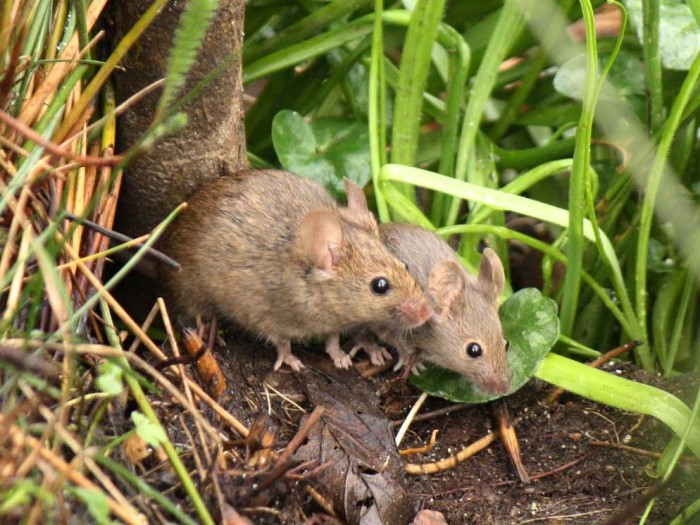Scientists sniff out female mouse scents that make males frisky
Discovery shines a spotlight on how mouse pheromones control behavior

Scientists at Washington University School of Medicine in St. Louis have identified two chemical scents in the urine of female mice that arouse sexual behavior in males, a discovery that shines a spotlight on how mouse pheromones control behavior. <em>Photo: Jans Canon</em>
Scientists have identified two chemical scents in the urine of female mice that arouse sexual behavior in males, a discovery that shines a spotlight on how mouse pheromones control behavior.
The research, at Washington University School of Medicine in St. Louis, is available online in the journal Cell.
“Science has long recognized that urine, sweat and other bodily fluids contain chemical communication signals called pheromones that can influence the biology or behavior of others,” said senior author Timothy E. Holy, PhD, associate professor of neurobiology and anatomy. “Most mammals use the information in these signals for social purposes, such as establishing territory or dominance, or in courtship and mating. In many cases, though, the specific chemical identities of the signals are unknown.”
The new study, led by staff scientist Xiaoyan Fu, PhD, took advantage of the neurons in the noses of male mice to start narrowing down the compounds of interest. Using a new technique the researchers developed to identify pheromones in complex mixtures, the researchers narrowed down a list of 1,600 potentially relevant chemicals in male and female mouse urine to a list of just 23. Among those 23 chemicals might be signals that convey information about sex, age, dominance and other factors.
The researchers then focused on neurons that fired in response to all samples of female urine but no samples of male urine, hoping that these neurons would lead them to female sex pheromones. Only two of the 23 chemicals fit the pattern. Through collaboration with Michael L. Gross, PhD, professor of chemistry, the scientists discovered that both chemicals are waste products of steroid metabolism.
“Mice make hormones and steroids that regulate aspects of their physiology,” Holy said. “At some point, those hormones have to be cleared out and converted into waste products. So when an animal’s nose detects the waste products from another animal, it’s a bit like spying on the neighbors by going through their garbage. These chemicals send signals about what’s going on internally in another animal.”
The firing patterns of the male olfactory neurons in different strains of mice when exposed to various female urine samples implicated the two specific chemicals, providing the first evidence that they have a role in social communication by activating neurons in the nose.
“Male mice will spend a lot of time investigating female urine,” Holy said. “But they show very little interest in male urine — one sniff and they move on — and similarly little interest in the urine of female mice after their ovaries have been removed. So presumably there is some cue in normal female urine that attracts male interest.”
But beyond simply measuring the activity of neurons, the researchers analyzed male mouse behavior when exposed to the two chemicals.
“These two compounds alone are very good at mimicking the increased interest that males show to female mouse urine,” Holy said. “If you take one or both of these compounds and add them to male mouse urine — a stimulus male mice normally spend little time with — all of a sudden they become much more interested. It doesn’t explain the whole effect of female urine on male mice, but it explains a large fraction of the response. We think there’s still some component of the response to female urine that we’re not mimicking yet.”
Similarly, applying these chemicals to the bodies of female mice without ovaries substantially increased the number of times males attempted to mate with them. And conversely, the researchers showed that removing these two chemicals from female mouse urine substantially reduced male mating behavior.
Holy said this study is an important piece of the puzzle in understanding the neurobiology of mammals.
“One of the nice things about this pheromone system is that it’s a relatively simple and compact neural circuit in a complicated animal,” he said. “It doesn’t occupy a large percentage of the mouse’s brain and yet it does interesting things like sex recognition, decision making and learning. It’s great that we now have a new set of tools to manipulate neurons and see how they respond and what the downstream consequences are.”






